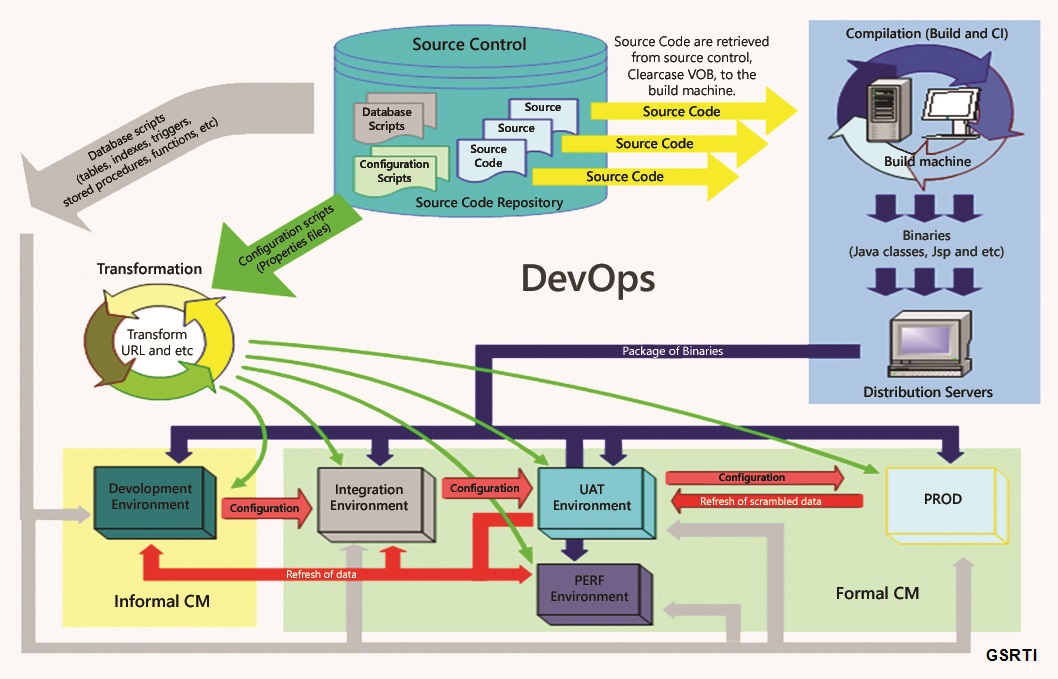
Software Configuration Management
Software Configuration Management
Software configuration management (SCM) is a software engineering discipline consisting of standard processes and techniques often used by organizations to manage the changes introduced to its software products. SCM helps in identifying individual elements and configurations, tracking changes, and version selection, control, and base lining.
SCM aims to control changes introduced to large complex software systems through reliable version selection and version control.
SCM defines a mechanism to deal with different technical difficulties of a project plan. In a software organization, effective implementation of software configuration management can improve productivity by increased coordination among the programmers in a team. SCM helps to eliminate the confusion often caused by miscommunication among team members. The SCM system controls the basic components such as software objects, program code, test data, test output, design documents, and user manuals.
The SCM system has the following advantages:
- Reduced redundant work.
- Effective management of simultaneous updates.
- Avoids configuration-related problems.
- Facilitates team coordination.
- Helps in building management; managing tools used in
- Defect tracking: It ensures that every defect has traceability back to its source.
Build Management
Build Management
Software Build is a process of converting source code files into binary files which executes on end user’s machine. This also includes packaging additional third party tools as required. In a programming context, a build is a version of a program. As a rule, a build is a pre-release version and as such is identified by a build number, rather than by a release number. Reiterative (repeated) builds are an important part of the development process. Throughout development, application components are collected and repeatedly compiled for testing purposes, to ensure a reliable final product. Build tools, such as make or Ant, enable developers to automate some programming tasks.
As a verb, to build can mean either to write code or to put individual coded components of a program together.
Release management is a software engineering process intended to oversee the development, testing, deployment and support of software releases. The practice of release management combines the general business emphasis of traditional project management with a detailed technical knowledge of the systems development lifecycle (SDLC) and IT Infrastructure Library (ITIL) practices.
Release management usually begins in the development cycle with requests for changes or new features. If the request is approved, the new release is planned and designed. The new design enters the testing or quality assurance phase, in which the release is built, reviewed, tested and tweaked until it is ultimately accepted as a release candidate. The release then enters the deployment phase, where it is implemented and made available. Once deployed, the release enters a support phase, where bug reports and other issues are collected; this leads to new requests for changes, and the cycle starts all over again.
Continuous Integration
Continuous Integration
Continuous integration (CI) is a software engineering practice in which isolated changes are immediately tested and reported on when they are added to a larger code base. The goal of CI is to provide rapid feedback so that if a defect is introduced into the code base, it can be identified and corrected as soon as possible. Continuous integration software tools can be used to automate the testing and build a document trail.
Continuous integration has evolved since its conception. Originally, a daily build was the standard. Now, the usual rule is for each team member to submit work on a daily (or more frequent) basis and for a build to be conducted with each significant change. When used properly, continuous integration provides various benefits, such as constant feedback on the status of the software. Because CI detects deficiencies early on in development, defects are typically smaller, less complex and easier to resolve.
Best practices of CI include:
- Committing code frequently.
- Categorizing developer tests.
- Using a dedicated integration build machine.
- Using continuous feedback mechanisms.
- Staging builds.
CI originated from within the extreme programming paradigm but the principles can be applied to any iterative programming model, such as agile programming. Traditional development approaches, such as the waterfall model can benefit from using CI methods for the construction stage.
Software Release Management
Software Release Management
Software release management is a software engineering process intended to oversee the development, testing, deployment and support of software releases. The practice of release management combines the general business emphasis of traditional project management with a detailed technical knowledge of the system development lifecycle (SDLC) and IT Infrastructure Library (ITIL) practices.
When software is developed and tested, it will often go through a release management team (especially in larger development shops). The main activities involved in release management are:
1 Generating a planning policy for the implementation of new versions
2 Creating new versions or buying them from third parties
3 Testing new versions in an environment simulating the production environment
4 Implementing new versions in the production environment
5 Carrying out back-out plans to remove the new version if necessary
6 Keeping the configuration management database (CMDB) up to date
Informing and training customers and users about the functionality of the newly released version
Software release management usually begins in the development cycle with requests for changes or new features. If the request is approved, the new release is planned and designed. The new design enters the testing or quality assurance phase, in which the release is built, reviewed, tested and tweaked until it is ultimately accepted as a release candidate. The release then enters the deployment phase, where it is implemented and made available. Once deployed, the release enters a support phase, where bug reports and other issues are collected; this leads to new requests for changes, and the cycle starts all over again.
Enterprise Change Management
Enterprise Change Management
Enterprise Change Management (ECM) is a concept and a process for deploying change management across an organization. It goes beyond the project level and focuses on an overall organizational approach to managing change.
Change management is a systematic approach to dealing with change, both from the perspective of an organization and on the individual level. A somewhat ambiguous term, change management has at least three different aspects, including: adapting to change, controlling change, and effecting change. A proactive approach to dealing with change is at the core of all three aspects. For an organization, change management means defining and implementing procedures and/or technologies to deal with changes in the business environment and to profit from changing opportunities.
Successful adaptation to change is as crucial within an organization as it is in the natural world. Just like plants and animals, organizations and the individuals in them inevitably encounter changing conditions that they are powerless to control. The more effectively you deal with change, the more likely you are to thrive. Adaptation might involve establishing a structured methodology for responding to changes in the business environment (such as a fluctuation in the economy, or a threat from a competitor) or establishing coping mechanisms for responding to changes in the workplace (such as new policies, or technologies).
Organizations have standard processes and tools for project management, talent management and continuous improvement. Many have recognized the need for the same type of disciplined processes for change management.

GSR Technologies, Inc. is specialized in implementing SCM and ECM for your business needs. Our Consultants are specialized in the software configuration management and enterprise change management and process. We can customize your software configuration management and maintain your application. We are specialized implementing solution for support of your development of applications geographically. We provide a comprehensive technology to help clients successfully build, deploy and manage mission critical enterprise applications in an open systems environment.






